Information Technology is fundamentally impacting the business world, forcing businesses to broaden how they assess technology. This includes understanding its impact on their strategy, their products/services, and their customer-facing experiences. B2B market research must adapt to deliver value in this technology-altered landscape. In this article we examine five such adaptations, which can be overlooked: whom to target for research, what topics to address, when/how frequently to gather data, how to interpret input, and how to act upon the findings.
To provide focus, we will consider these five adaptations using a particular B2B market research scenario: understanding the evolving decision making/purchase process for information technology. This process is currently changing dramatically across industries.
1. Whom to Target for Understanding Decision Making for Business Purchases
The IT department has traditionally played the dominant role in technology purchases, along with Finance. But as technology increasingly defines the “customer interface and experience”, other organizations no longer delegate purchase decisions to IT. Strategy, Product/Services Management, and Marketing are now often at the decision table, broadening the required participants in purchase process research.
The level of individuals to target for this research has also been rising, as business impact factors also draw senior executives – including C-suites – into the decision process. This is particularly true when evolution to a new model is occurring (e.g., moving to the cloud). The broader/more senior group of research contacts considers a wider range of factors in their decision: technology impact on their business model, new cost/value tradeoffs, time horizons, other strategic and competitive considerations, etc.
And it’s important to identify both the key influencers and the ultimate go/no-go decision makers. This may change based on circumstance, but targeting this broader range of titles and levels reveals important nuances and rationales driving the purchase process.
2. What Topics to Address in Business Purchase Research
A broader set of decision-makers brings a broader set of factors to consider for the purchase decision. In our scenario, a traditional technology purchase involved an examination of product performance, reliability/quality, operational ease, interoperability, and a range of cost/value measures. But given the business functions running on the technology infrastructure, the purchase examination now often involves the fit with and impact of technology on applications and processes.
Research into the technology purchase process must be aware of these broader considerations, and determine how to address them. One step is involving the broader set of stakeholders to determine:
- Their role(s) in the process
- What issues are most critical now and looking ahead 18-24 months
- Where they go for intelligence (sources may vary by department)
- What is their Persona (we may have a mix of visionaries, traditionalists, etc.)
Another step is probing into the stages of the decision process, understanding who is involved when and what are rough timeframes for moving from stage to stage. Also, we need to understand the decision making criteria and protocols: what “gates” must be cleared, when is a committee involved versus an individual decision maker, who has veto power, and what types of benchmarks and targets are used.
3. When/How Frequently to Gather Data Regarding the Business Purchase Process
Establishing a baseline understanding of the business purchase process can be done as part of an annual Customer Relationship Management research program. CRM involves key customer contacts, and after gathering their input on the relationship, time can also be spent understanding the decision making topics described above for the purchase process.
There is no “right time” to establish this baseline understanding, but there can be triggers for when research should occur. One trigger is when new business or technology approaches are occurring: moving more aggressively into cloud- based offers, altering channel strategy, launching a new alliance, targeting a new customer class (industry, geography, size), or executing a major reorganization. In these cases, the prior purchase process may also change and researching new decision making dynamics becomes important.
The timing to assess impacts on decision making is not just at the launch of a new approach. For example, a cloud model can involve new lifecycle stages:
- There may be more consulting steps up front to assess evolution of customer infrastructure into the cloud.
- Standard product implementation phases are altered to reflect new software deployment, testing, and security in the cloud.
- And evolution in the cloud will likely occur on a different timetable than a company’s pre-cloud upgrade schedule.
As such, research on how the purchase/decision process changes in moving to the cloud can occur early in that process (planning/design), and then during the ongoing management/evolution stages (e.g., how are decisions made on upgrading an application running on the cloud, and who is involved). The timing of research must be sensitive to the lifecycle of the decision making process for technology purchases in a new business environment.
4. How to Interpret Input on the Business Purchase Process
We’ve discussed that the constituents, key considerations, timing, etc. involved in decision making in the business purchase process may change as a company moves into a new business model – such as the cloud. But to understand what factors are priority influencers in making a cloud-related move, we should not only ask the respondent directly, we should also perform a derived impact analysis to uncover “hidden drivers” from the new model. That is, respondents’ experiences/feelings from past decision making may now be incomplete, and even misleading.
For instance, we may probe directly on critical factors assessed in the cloud evaluation, options considered and why rejected, but then also statistically analyze the key drivers. While infrastructure quality and price may have been priorities in the past, in the cloud it may instead be performance of business applications, ability to evolve and security.
A Bayesian Network analysis may uncover unanticipated interactions/influences among decision making variables. And Persona analysis can reveal different classes of buyers for the new model. For instance, as evolution of the cloud and applications running on it become critical to the business, a “Visionary” Persona class focused on knowing roadmaps/trends and strategic implications may emerge – perhaps including senior executives.
5. How to Act Upon Findings about Decision Making for Business Purchases
Involving a wider range of research participants, addressing a broader set of timely topics with in-depth analysis, leads to more actionable findings, such as:
- Leveraging knowledge of the role that organizations and senior executives play in the decision making – and the factors that are key to their thought process – as an entrée for engaging with them.
- Strengthening contact with the customer’s traditional IT buyers, who may now benefit from having a vendor/partner to explore the mix of business and technical implications arising from new approaches.
- Providing new information sources that are important to decision making and fine-tuning search capabilities to avoid overwhelming users with content.
- Using the longer time horizon insights to encourage customers to share more of their strategy, and so help the relationship grow from technology provider to a technology/business partner.
What’s Next?
As mentioned above, this article has focused on a particular example to illustrate the broader topic of how B2B market research must adapt to deliver value in a technology-altered landscape. At KS&R, we have broad client experience in developing and applying state of the art research approaches and consulting to derive actionable findings and value for our clients’ business needs – technology driven or otherwise.


